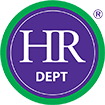At the time of writing, there is no relaxation of the lockdown rules.
But many companies went further than the measures require. They completely shut down operations while they worked out what they needed to do to manage COVID-19 risk effectively with workers and other people on site.
Some companies including manufacturers like Jaguar Land Rover, construction firms like Taylor Wimpy and retailers like B&Q, have worked out a way forward and resumed operations in a limited capacity.
Is the time right for you to start trading again, assuming lockdown rules currently permit you to? Or do you wish to develop procedures so that you are good to go as soon as lockdown measures are relaxed?
It is a fluid situation and the government will imminently begin publishing guidance of its own on how specific sectors can re-open. And we would recommend keeping a keen eye on what they say.
In the meantime, we’ll explore health and safety measures which all businesses should be looking at, and suggest some sector specific ideas. If you want support getting a detailed plan together, please get in touch with us and we will help you develop a best practice approach for your business.
Be wary of COVID-19 health and safety dismissals
Before we look at the types of plan you may make, it’s important to stress that you must get your employees’ buy-in to your health and safety solutions. This will be done through good plans and good communication.
Employment tribunals relating to disputes over an employee feeling in imminent danger have not been common. Industry hazards and mitigations are normally well established in a developed economy like ours. But for the foreseeable future, it may be entirely reasonable for an employee to feel endangered by even showing up at work. And in these cases, it is the employee’s belief that counts, not your opinion. Hence, why you need their buy-in.
The steer from the HSE
As you would imagine, the HSE is aligned with what Public Health England (and devolved jurisdictions) are prescribing. In the workplace this means social distancing to a two metre minimum where possible, and frequent, thorough hand washing. And if anyone displays symptoms of COVID-19 they should self-isolate in line with the PHE guidance.
Contact tracing is not a wider government policy. But it would be good practice in a work setting to notify people after they have been in contact with someone who is diagnosed or self-isolating, that a team-member is affected in this way. Don’t break GDPR rules by divulging personal information though.
As we said earlier, the government will roll out more detailed guidance. But for now, the above should be the starting point for developing your procedures.
What does this mean for certain sectors?
You’ll need to apply these guiding principles to your own organisation appropriately. There are conflicting stories about PPE like face masks, but this is another area that any organisations in any industry may wish to consider.
Here’s a look at some ideas depending on your sector.
Schools
In education, class sizes will be a major obstacle to maintaining social distancing. Reconfiguring classrooms, having children in on shifts (morning and afternoon, week one/week two or year groups for instance) and regular disinfecting of surfaces should all be explored.
Cafes, restaurants and bars
Hygiene will be a high priority, but it always is. So such businesses should be well placed to develop policies which take COVID-19 into consideration. What will be more of a challenge is managing social distancing, both between staff and for customers. Front and back of house may need a redesign.
Retail beyond the non-essential shops
As more shops begin to open, many lessons will have been learned from what the supermarkets have implemented. Lots of hand gel available to staff and customers, regular cleaning schedules and one-way systems in store. Floor markings designating two-metre distancing – both around stores and in queuing systems outside may also be relevant. Use of other facilities, depending on the store type, like changing rooms or toilets, may need to be reviewed and restricted.
Manufacturing
Floor markings may again be useful to help staff adhere to social distancing. Allow time in shifts for equipment to be disinfected and PPE to be properly fitted. If staff normally change into overalls on site, you may state this to be done at home to eliminate crowding in changing rooms. You may start at quite a low capacity and work your way up as your team become comfortable with the new ways of working.
Get professional H&S plans in place
Each sector will have its own challenges, but with good planning there will be procedures that can be put in place to get trade going again. Some sectors will face even more challenges, particularly where close contact is unavoidable like eyecare and hair salons.
If you want to be ready to open for business again as soon as possible, get in touch with us to conduct a detailed risk assessment and put in place plans to keep staff and customers as safe as practicable.
